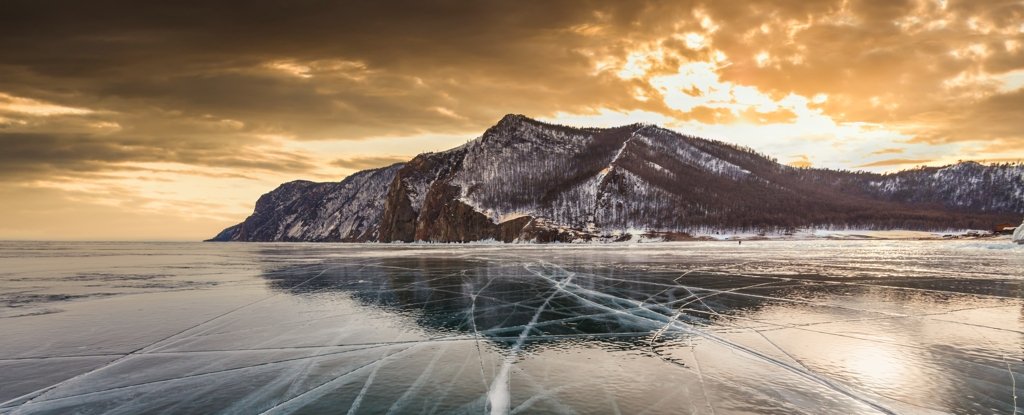Russian scientists on Saturday launched one of the world’s largest space telescopes underwater to peek deep into the universe from the pristine waters of Lake Baikal.
The deep underwater telescope, which has been under construction since 2015, is designed to detect neutrinos, the smallest particles currently known.
The telescope, called Baikal-GVD, was immersed at a depth of 750-1,300 meters (2,500-4,300 feet), about four kilometers from the shores of the lake.
 Baikal-GVD is lowered into the water. (Kirill Shipitsin / Sputnik Kirill Shipitsin / Sputnik / AFP)
Baikal-GVD is lowered into the water. (Kirill Shipitsin / Sputnik Kirill Shipitsin / Sputnik / AFP)
Neutrinos are very difficult to detect and water is an effective medium to do so.
The floating observatory consists of spherical glass strings and stainless steel modules.
On Saturday, scientists observed how the modules were carefully lowered into the icy waters through a rectangular hole in the ice.
“There is a half cubic kilometer neutrino telescope right under our feet,” Dmitry Naumov of the Joint Institute for Nuclear Research told AFP as he stood on the frozen surface of the lake.
In a few years, the telescope will be expanded to one cubic kilometer, Naumov said.
 (Bair Shaibonov / Russian Institute for Nuclear Research / AFP)
(Bair Shaibonov / Russian Institute for Nuclear Research / AFP)
The Baikal telescope will compete against Ice Cube, a giant neutrino observatory buried under the Antarctic ice in a U.S. research station at the South Pole.
Russian scientists say the telescope is the largest neutrino detector in the Northern Hemisphere and Lake Baikal – the largest freshwater lake in the world – is ideal for housing the floating observatory.
“Of course, Lake Baikal is the only lake where you can use a neutrino telescope because of its depth,” Bair Shoibonov of the Joint Institute for Nuclear Research told AFP.
“Fresh water is also important, water clarity as well. And the fact that there is two to two and a half months of ice cover is also very important.”
The telescope is the result of a collaboration between scientists from the Czech Republic, Germany, Poland, Russia and Slovakia.
© Agence France-Press
